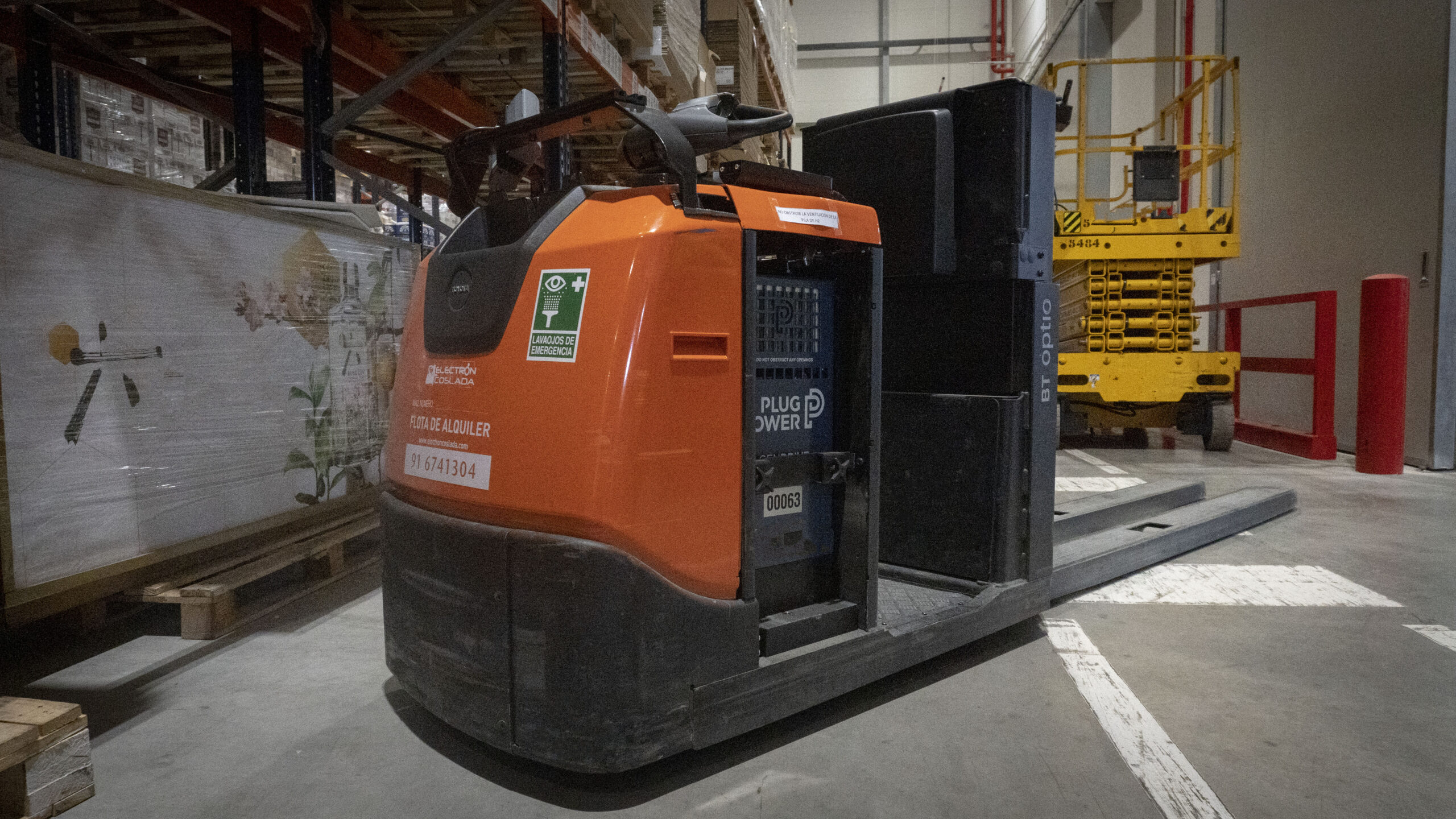Do you know the advantages of hydrogen-powered forklifts?
“We were the first in our country to invest in forklifts with hydrogen fuel cells”. Silvia García, specialist in environment and sustainable development According…
On March 14, 2022

“We were the first in our country to invest in forklifts with hydrogen fuel cells”. Silvia García, specialist in environment and sustainable development According…
On March 14, 2022
Silvia García, specialist in environment and sustainable development“We were the first in our country to invest in forklifts with hydrogen fuel cells”.
According to the European Environment Agency, logistics and transport operations are responsible for 25% of CO2 emissions in Spain. This percentage is expected to increase due to the rise of e-commerce in our country. “For this reason, it is essential that logistics invests in innovation to find sustainable solutions that allow the sector to decarbonise,” says Silvia García, a specialist in environment and sustainable development at FM Logistic.
For many years, FM Logistic has set itself the goal of leading the sector in innovation and sustainable development. “To achieve this goal, we have opted for what is expected to be one of the fuels of the future, hydrogen. In fact, the hydrogen station that FM Logistic has installed at its centre in Illescas, Toledo, is already in the implementation stage. This will be the first hydrogen station in the logistics sector in Spain.

According to Silvia García, “the logistics sector’s environmental commitment must also include decarbonising the inside of its warehouses. And not only by looking for more sustainable alternatives for the distribution of goods”. With this objective in mind, FM Logistic has incorporated the first hydrogen forklift trucks in Spain at its Illescas warehouse. “There are obvious reasons that have motivated us to choose this option to replace the lead-acid batteries used until now”, she added.
In this respect, Silvia García comments that FM Logistic has just prepared a comparative study of forklift trucks with hydrogen batteries, based on a large volume of documentation and analysed bibliography. It has been taken as a starting point the lead-acid batteries and as a reference another alternative replacement, such as lithium batteries.
According to this study, the benefits of hydrogen batteries are more than remarkable. Although, in both cases the most important thing is the non-emission of greenhouse gases during their use, and even more so when the energy needed for these batteries and for the generation of hydrogen comes from renewable sources. An example of this, is the photovoltaic installation located in the building itself.
In terms of energy density (kWh/kg), the advantage of hydrogen over battery systems is indisputable. In other words, if you want to increase the range or distance travelled by a vehicle, with electric batteries this involves a significant increase in weight and space that, in heavy or intensive use vehicles, the advantage of the greater efficiency of batteries compared to hydrogen cells almost disappears.
On the other hand, the autonomy of the truck with a lithium battery can be up to 8 hours, while with the hydrogen battery it is 12 hours. The hydrogen battery exceeds the equivalent of an 8-hour working day. Another interesting fact is that the useful life of lithium batteries is around 10 years and that of hydrogen cells can exceed 15 years.
The most notable aspect in terms of productivity is the recharging time. For a forklift with a hydrogen battery it is less than two minutes and for a forklift with a lithium battery it is between 2 and 4 hours. This translates into significant time savings in the warehouse and, consequently, an increase in the productivity of operators and machines.

In terms of indirect environmental aspects, those associated with the manufacturing and disposal stages should be highlighted. In this sense, it is lithium batteries that have the greatest environmental impact. Mainly during the mining and refining of the metals necessary for their manufacture. Although certain metals are also required for the manufacture of hydrogen batteries, the fundamental difference resides in the diversity of metals and the quantities required for each system. While for lithium batteries, metals such as cobalt, nickel, copper and aluminium are used in larger quantities in addition to lithium, only platinum and nickel are used for hydrogen batteries. And in minimal quantities; consequently, the environmental impact is lower.
For the disposal stage, several lithium battery recycling systems are currently available. However, the most frequently used methods are based on processes that have significant environmental impacts (such as gas emissions) and high energy costs.
Hydrogen fuel cell recovery and recycling techniques are still in the early stages of development. This, together with the fact that the amount of spent fuel cells is currently low, means that fuel cell materials are not currently being recovered on a large scale. Instead, traditional separation and disposal methods prevail. However, the existence of a mature supply chain for use must be taken into account. And thus the recycling of platinum in traditional vehicle catalysts, which can also be used for hydrogen fuel cells.
An example of high recycling efficiency is Ballard’s current technology. Using proper recycling processes, it is able to recover 95% of the precious metals from its spent fuel cells.
For all these reasons, and in the case of the FM Logistic centre in Illescas, which has its own photovoltaic installation for on-site hydrogen generation, hydrogen cell technology is the chosen option. It is a pioneering commitment to promote this technology on the road to zero-emission logistics.
How can we help you ?
Fill in the form